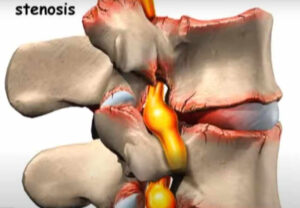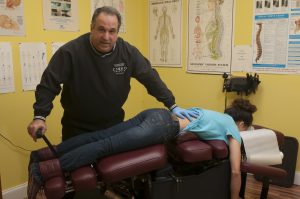What is Spinal Canal Stenosis?
Spinal canal stenosis is a condition characterized by the narrowing of the spinal canal, the hollow tube in the spine that houses the spinal cord and nerve roots. This constriction can exert pressure on the spinal cord and nerves, resulting in pain, numbness, tingling, and weakness in the back, neck, arms, and legs.

Causes of Spinal Stenosis
This condition can manifest in any section of the spine, but it is most commonly observed in the lower back (lumbar spine) and neck (cervical spine). Osteoarthritis, the gradual degeneration of joints over time, represents the primary cause of this condition. Additional factors contributing to this condition include:
- Herniated disc
- Bone spurs
- Tumors
- Spinal injuries
- Certain bone diseases
- Rheumatoid arthritis
Symptoms and Indications of Spinal Stenosis
The symptoms can exhibit a wide range of intensity and presentation, as they vary from person to person. This condition manifests through diverse indications, which may include:
- Back pain
- Neck pain
- Arm or leg numbness or tingling
- Arm or leg weakness
- Difficulty walking or standing
- Activity-related pain that subsides with rest
- Increased discomfort when bending forward or sitting
Non-Invasive Treatment Options

To pursue non-invasive treatment, it is crucial to consult with a Doctor of Chiropractic who specializes in diagnosing spinal stenosis using advanced techniques such as MRI, X-ray analysis, and Orthopedic and Neurological Testing.
At our office, we employ COX Flexion/Distraction, an extremely precise Spinal and Disc Decompression therapy. We also integrate Electric Stimulation, Therapeutic Stretching and Strengthening exercises, and provide foot-arch correction if deemed necessary.
Prognosis and Management
The prognosis varies depending on individual circumstances. Mild cases can often be managed with non-surgical interventions, while individuals with severe symptoms may require surgical intervention to alleviate pressure on the spinal cord and nerves.
If you have received a diagnosis of spinal canal stenosis, collaborating with your chiropractor to devise a customized treatment plan is crucial. With appropriate treatment, it is often possible to effectively manage symptoms and enjoy a fulfilling, active life.
Additional Resources and Further Reading
For more information about spinal disc conditions, you can refer to our video on Spinal Disc Conditions or visit the following resources:
- Mayo Clinic – A reputable source providing comprehensive information about spinal stenosis, its causes, symptoms, and treatment options.
- WebMD – A trusted resource offering an overview of spinal stenosis, including its causes, symptoms, and potential treatments.
